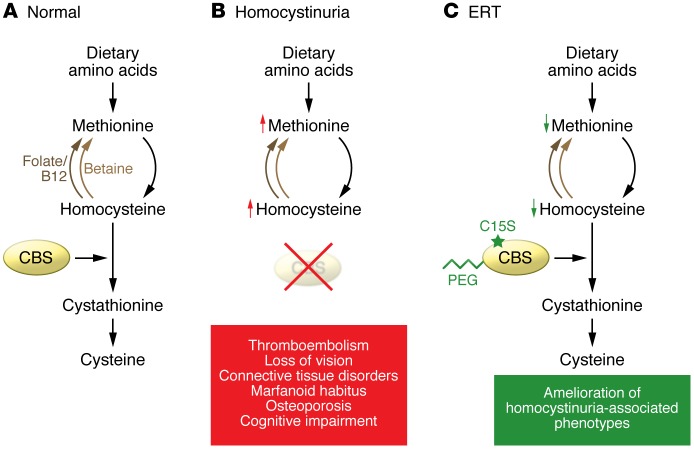Figure 1. ERT for homocystinuria.
(A) In healthy individuals, methionine from dietary sources is metabolized into homocysteine, which is then converted into cysteine by the enzyme CBS. (B) Homocystinuria develops in individuals lacking CBS. Elevated homocysteine results in a variety of adverse effects, including thromboembolism, connective tissue disorders, Marfanoid habitus, osteoporosis, and cognitive impairment. Homocysteine and methionine are elevated to extremely high concentrations. (C) In this issue, Bublil and colleagues developed a strategy for ERT (5). In a murine model of homocystinuria, a PEGylated form of CBS provided long-term reduction of homocysteine levels. Moreover, the introduction of a C15S mutation reduced aggregation of the recombinant, PEGylated enzyme.

